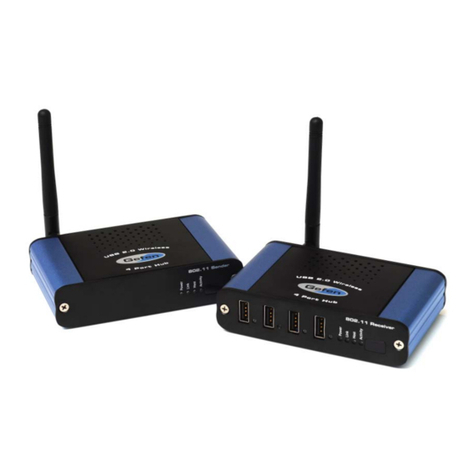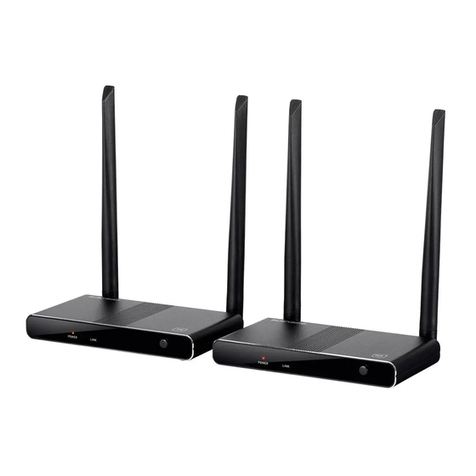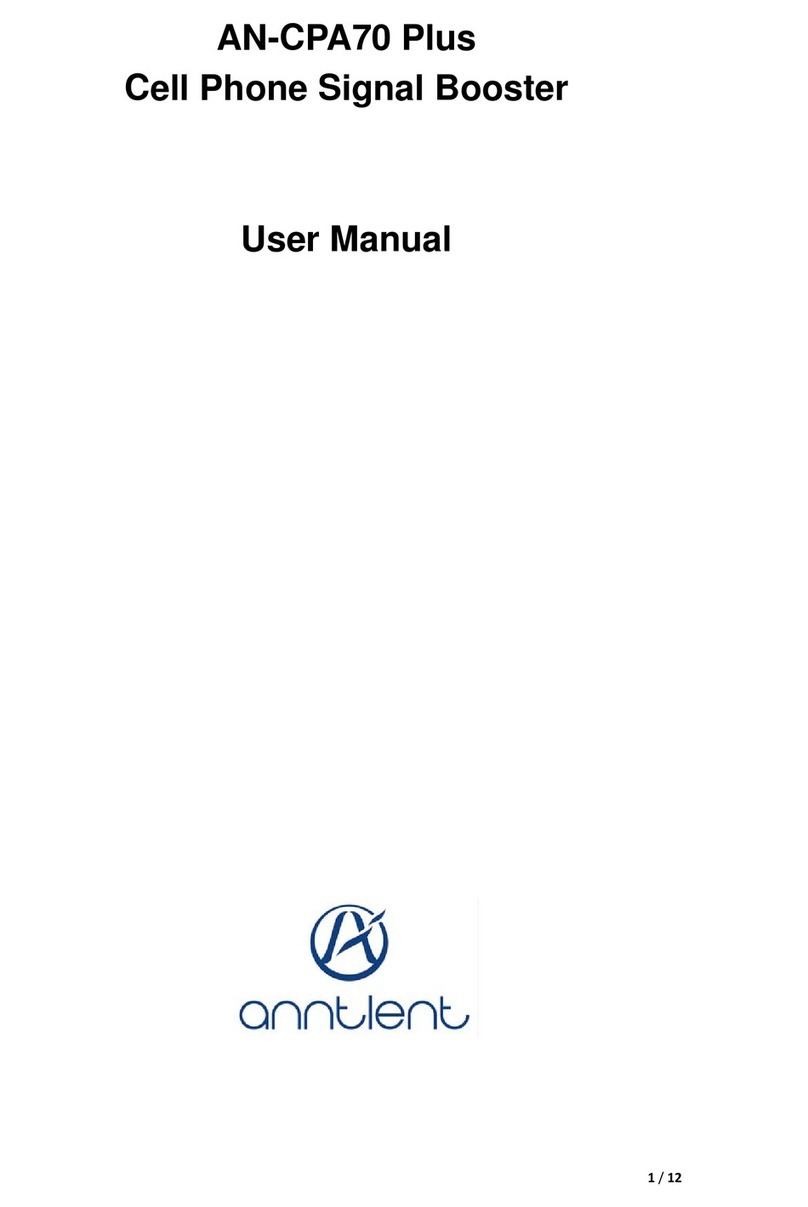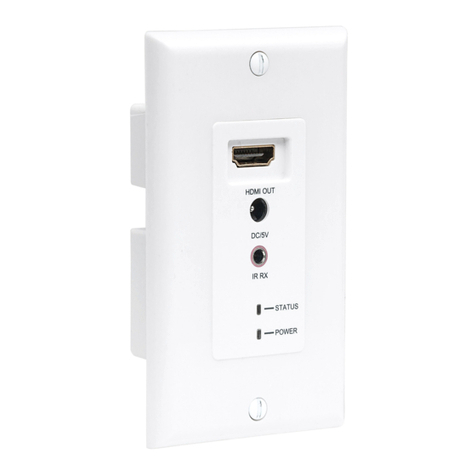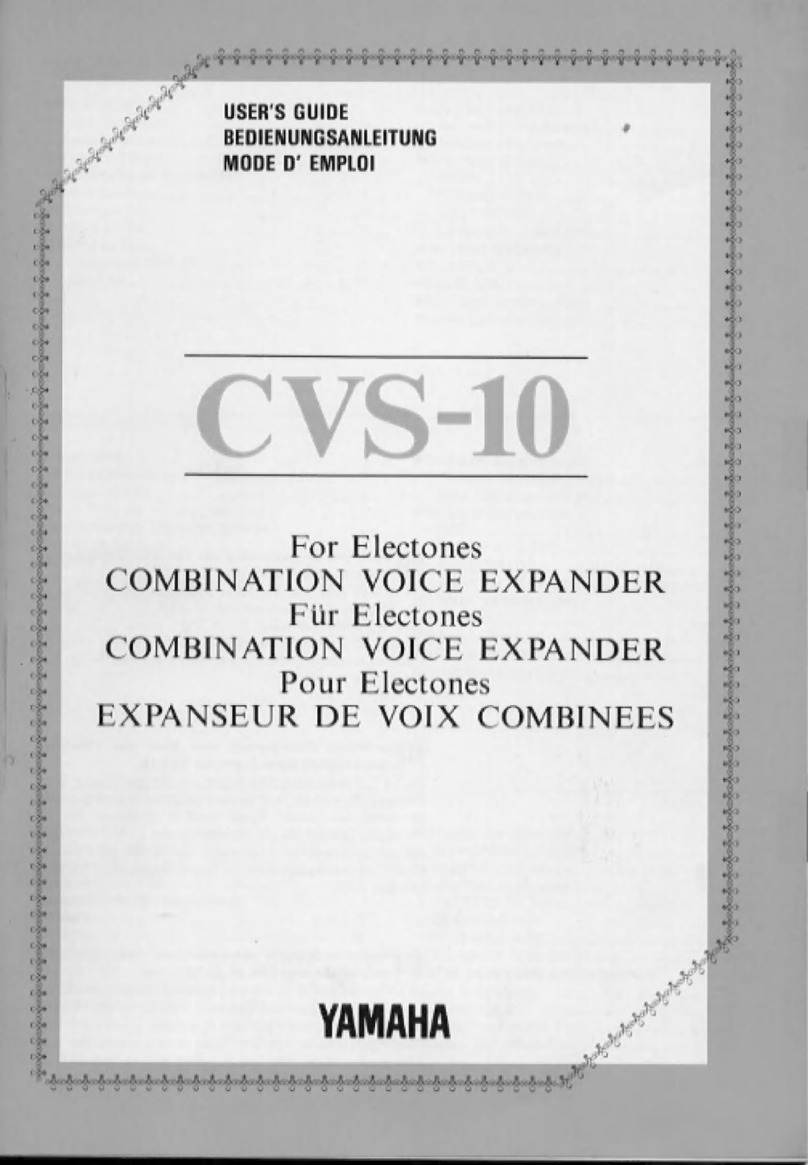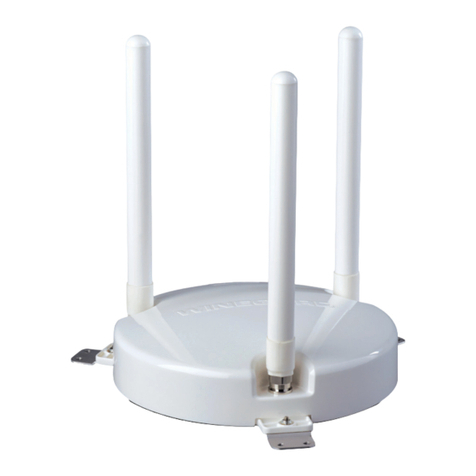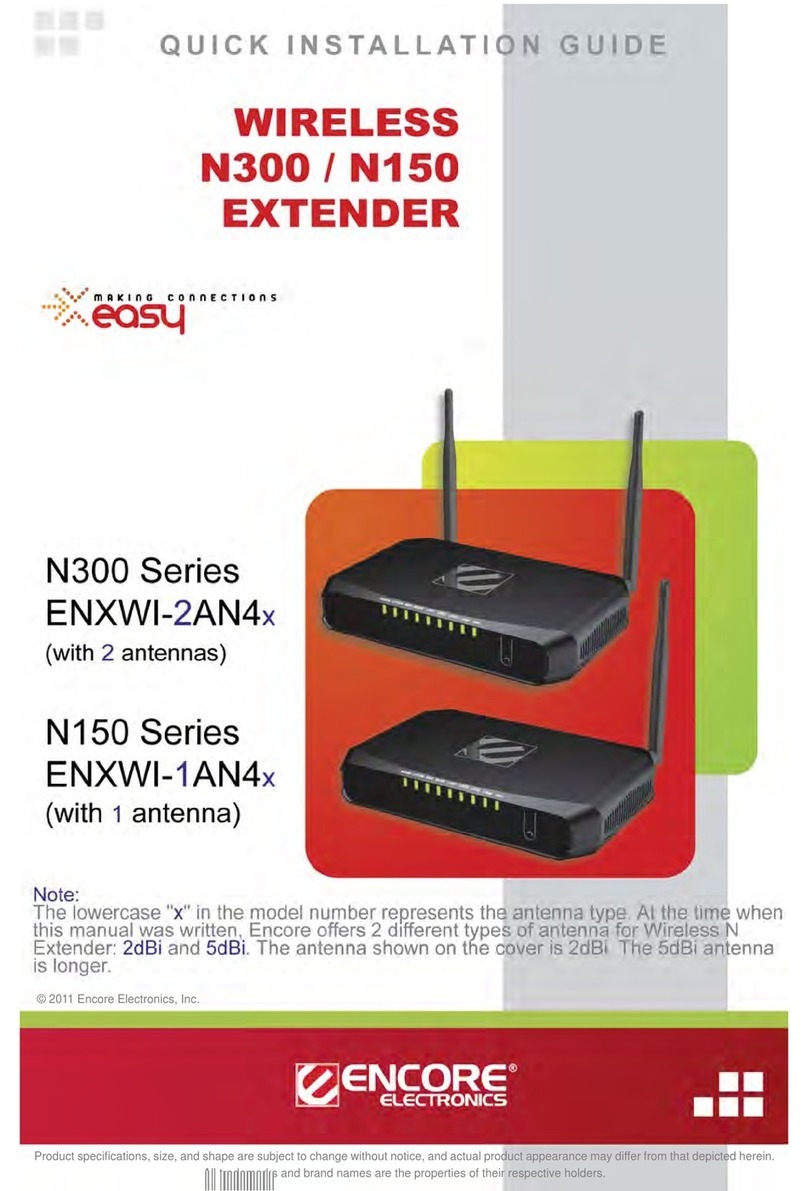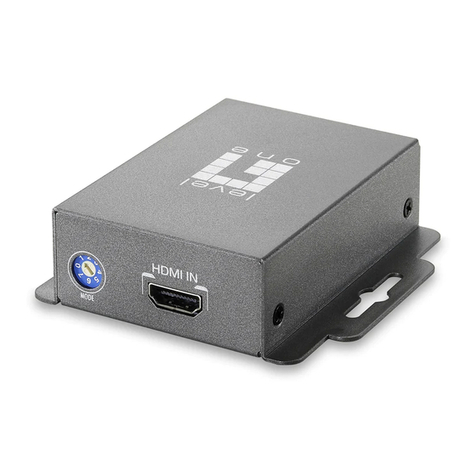FEDCO HPB-2800 User manual

HPBTM Series
© Copyright 2018 Fluid Equipment Development Company | www.fedco-usa.com
- 2-
FEDCO Certications
ISO 9001 and ISO 14001:
FEDCO has adopted the ISO 9001 standard to dene and develop our Quality Manage-
ment System (QMS.) The QMS allows FEDCO to better serve our customers’ needs
through continuous improvement of the quality, delivery, and eciency of our products.
3 FEDCO achieved ISO 9001 registration in September 2017.
FEDCO has adopted the ISO 14001 standard to dene and develop our Environmental
Management System (EMS) to better protect our environment.
3 FEDCO achieved ISO 14001 registration in September 2017.
REGISTERED
ISO
14001:2015
ISO
9001:2015
REGISTERED
CE Stamp:
CE marking conrms that specic products are in compliance with European Union
requirements. This allows FEDCO’s product lines to be sold throughout the European
Economic Area. Most FEDCO products can be provided with the CE mark.
Compliant Test Systems:
Performance acceptance testing of FEDCO pumps and energy recovery devices are
measured using procedures and instrumentation tested by a third party NSF® auditing
company to be in accordance to the Hydraulic Institute’s H.I. 14.6 standards for cen-
trifugal pump testing and data recording.
www.fedco-usa.com

HPBTM Series
© Copyright 2018 Fluid Equipment Development Company | www.fedco-usa.com
- 3-
Commitment to Quality & Success
Fluid Equipment Development Company (FEDCO)
was founded in 1997 to develop new uid machinery
to reduce the cost of reverse osmosis desalination.
The results included patented concepts, highly in-
tegrated design, superior production software, and
sophisticated manufacturing processes. Our eorts
culminated in multiple lines of energy recovery tur-
bines and pumps uniquely suited for seawater and
brackish RO desalination.
We are the developers of the HP-HEMI™ ERD and
control system for mega-scale SWRO systems, as
well as the world’s rst low-cost integrated pump-ERD
for brackish water RO. Additionally, our Monroe facility
operates the largest pump and ERD test system dedi-
cated to SWRO systems in the world.
Our teams of talented and energetic engineers,
manufacturing specialists and systems experts have
created a fully integrated enterprise with one aim – to
provide our customers with customized uid machines
with exceptional eciency and low capital cost cou-
pled with customer service that exceeds their expec-
tations. The results include new designs, technology,
manufacturing processes, and standards. Our pumps
and ERDs use bearings that are lubricated by feed or
brine to eliminate the numerous maintenance and lo-
gistics issues associated with oil or grease lubricated
bearing systems. We oer three materials of construc-
tion: Duplex SS, Super Duplex SS and 316 SS.
We design uid machines to take full advantage of the
technical characteristics of the membrane process.
FEDCO pumps only cover ows and pressures found
in BWRO and seawater SWRO applications. They are
designed for clean uids and are optimized for typical
suction pressures in RO systems. Our ERDs include
variable area nozzles that meet typical brine pressure
variations. Our products eliminate external tubing car-
rying high pressure feed or brine that can fail creating
hazards to personnel and equipment. Our units are
designed for operation and maintenance by unskilled
personnel in the harshest of desert or marine environ-
ments.
With the longest warranty and the highest eciencies,
our product lines are unmatched in quality and per-
formance by any manufacturer in the RO equipment
market. FEDCO is a widely recognized supplier with
thousands of units installed around the world.
Eli Oklejas - FEDCO CEO
FEDCO USA
FEDCO
800 Ternes Drive
Monroe, MI 48162, USA
Telephone: +1 (734) 241-3935
Fax: 734-241-5173
Email: [email protected]
FEDCO UAE
Oce 1910 | Concord Tower
P.O. Box 282102 | Media City
Dubai, United Arab Emirates
Telephone: +971 (0)4 242 3856
Fax: +971 (0)4 242 3856
Email: [email protected]
FEDCO SINGAPORE
(No Oce Address)
Telephone: +(65) 9784 3813
Email: [email protected]
www.fedco-usa.com
For patent coverage visit patent.fedco-usa.com

HPBTM Series
© Copyright 2018 Fluid Equipment Development Company | www.fedco-usa.com
- 4-
Table of Contents
Unpacking/ Inspection/ and Storage ...........5
HPB External Components......................... 5
Inspection of Unit Upon Receipt ................. 5
Pump Storage Requirements...................... 6
Long-Term Storage (>6 Months) Checklist . 6
Theory and Operation ...................................7
HPB External Components......................... 7
Installation Procedures.................................8
Warnings and Safety Precautions............... 8
User Health and Safety .............................. 9
Booster Installation Requirements.............. 9
Lifting and Handling ................................. 10
Baseplate Installation ............................... 11
Installation Congurations......................... 12
Booster Piping Connections...................... 14
Recommended Instrumentation and
Operation With VFD.................................. 18
Upstream Filtration.................................... 18
Start Up Check List .................................. 19
Preparation For Booster Start Up ............. 19
Start Up Precautions................................. 19
Booster Start Up ....................................... 19
Basic Troubleshooting................................20
Visual Inspection....................................... 20
Troubleshooting Chart............................... 21
Specications ..............................................22
Fastener Torque Specications ................ 22
Lubricants and Compounds...................... 22
Maintenance Schedule ............................. 23
Service Parts Kits...................................... 23
Ordering Parts........................................... 23
Service Policy ..............................................24
Return Material Authorization (RMA) ....... 24
Procedure ................................................. 24
Warranty Registration Form .......................27
HPB Unit Operating Conditions .................28
Notes.............................................................28

HPBTM Series
© Copyright 2018 Fluid Equipment Development Company | www.fedco-usa.com
- 5-
Unpacking/ Inspection/ and Storage
HPB External Components
Inspection of Unit Upon Receipt
• Review the contents of the packing list to make sure all components have been included.
• Inspect all components for signs of damage which may have occurred during shipping.
• If damage is present or if the contents are incomplete, please contact your shipping company
or a FEDCO representative before proceeding.
Item Description Item Description
1Brine outlet 8Pump casing
2Turbine end cap 9Pump end cap
3End cap lifting eye 10 Feed inlet
4Turbine casing 11 Unit nameplate
5Hoist ring 12 Base Feet
6Feed outlet 13 Actuator assembly (optional)
7Brine intlet 14 Foundation plate
Figure 1 - HPB-2800 Booster External Components
1
2
3
3
4
55
67
8
9
10
11
12
13 14

HPBTM Series
© Copyright 2018 Fluid Equipment Development Company | www.fedco-usa.com
- 6-
Unpacking/ Inspection/ and Storage Continued
Pump Storage Requirements
• The HPB™ unit must be protected from
sand, grit, and other foreign matter. For
long-term storage, the booster and all
other components should remain in their
original un-opened state. Both the unit
and its actuator (if equipped) are wrapped
and sealed in water/humidity proof foil with
desiccant bags added. The unit may be
stored at a temperature of 5-50° C or less
and/or a humidity level or 75% or less for an
indenite period of time. Do not remove the
protective covers until ready to install.
Long-Term Storage (>6 Months) Checklist
1. Check caps to ensure they have not been
damaged or allowed debris inside the unit.
• Check for debris (wood, slag, sand or any
dirt) and clean up with a clean, wet rag if
minor.
2. Check rotor:
• Turn manually (through feed inlet) and
check for ease of turning.
• Check for axial movement.
3. Seal check:
• Prime HPB with clean water and allow the
O-rings to soak for 1 hr before start-up.
Check for leaks at end cap and aux valve.
PROTECTIVE COVERS
Figure 2 - Proper HPB Storage
(Actuator Shipped Separately)
NOTES: Actuator manual provided by its manufacturer. Actuator installation, operation and
maintenance is not included in FEDCO HPB manual.

HPBTM Series
© Copyright 2018 Fluid Equipment Development Company | www.fedco-usa.com
- 7-
Theory and Operation
HPB External Components
The Hydraulic Pressure Booster™ or HPB™ is designed to provide brine energy recovery in
reverse osmosis (RO) systems. The HPB™ is energized by the high-pressure brine stream which
causes the HPB™ to generate a large pressure boost in the feed stream independent of the high
pressure feed pump.
The HPB™ is typically installed between the
high pressure feed pump and the membrane.
The feed passes through the pretreatment
system and then passes through the feed
pump which raises the feed pressure. The
pressurized feed passes through the HPB™,
which provides an additional pressure increase
before passing to the membrane. The high
pressure brine steam from the membrane is
directed back to the HPB™.
The HPB™ recovers the pressure energy and
discharges the brine at low pressure for dis-
posal. The HPB™ does not require a brine
disposal pump or gravity ow piping as the
brine can be discharged against a back pres-
sure. The HPB™ reduces feed pump energy
consumption and allows use of a smaller feed
pump, smaller motor, smaller motor starter,
electrical wiring, etc.
Motor
Brine
High Pressure
Brine Outlet
HPB™
Feed
High PressureLocation
Throttle Valve
Brine Stream
Pump
High Pressure
Permeate
Product
Motor
Permeate
Brine Brine
Product
Permeate
Product
Throttle Valve
HPB™
High Pressure
Location
Pump
Brine Stream
High Pressure
Feed
High Pressure
Brine Outlet
First Stage
Brine
Figure 3 - Hydraulic Pressure Booster Flow
Figure 4 - Interstage Boosting Pump Conguration

HPBTM Series
© Copyright 2018 Fluid Equipment Development Company | www.fedco-usa.com
- 8-
Safety practices and precautions for the operation
and maintenance of all FEDCO pump products
and energy recovery devices MUST BE FOL-
LOWED. This information supplements oral or
written instructions that may be received. Safety
MUST be practiced as part of the standard oper-
ating procedures for this equipment during any
installation and operation. To ensure that safe
operating and maintenance procedures are fol-
lowed, operators should develop and keep up
a program of safety checks and current instruc-
tions. This manual contains certain operating and
maintenance procedures that involve exposure
to potentially hazardous situations. The levels of
hazardous situations are as follows:
Hazards which are IMMEDIATELY ACCESSIBLE, and capable of
causing SEVERE PERSONAL INJURY OR DEATH.
DANGER
WARNING
CAUTION
ELECTRICAL
HAZARD
PUNCTURE
HAZARD
Hazards which are related to Electrical Components and can
RESULT IN ELECTRICAL RISKS, SHOCK, ELECTROCUTION
OR DEATH if instructions are not followed properly.
Hazards which are NOT IMMEDIATELY ACCESSIBLE, and can
cause PERSONAL INJURY.
Hazards which are NOT IMMEDIATELY ACCESSIBLE, but are
capable of causing SEVERE PERSONAL INJURY OR DEATH.
Hazards which are NOT IMMEDIATELY ACCESSIBLE and can
RESULT IN SEVERE PERSONAL INJURY OR DEATH if instruc-
tions are not followed properly.
Installation Procedures
Warnings and Safety Precautions

HPBTM Series
© Copyright 2018 Fluid Equipment Development Company | www.fedco-usa.com
- 9-
Installation Procedures Continued
WARNING
All HPB and safety precautions must be fol-
lowed to prevent physical injury to the operator.
It is illegal to operate the equipment in an EU
member state if the manual(s) is not written in
that states language. Contact FEDCO if a trans-
lated copy is needed.
CAUTION
A hydraulic pressure booster (HPB) is a pres-
sure-generating device with rotating parts that
can be hazardous. Any device containing gener-
ated pressure can rupture, explode or discharge
its contents if it is suciently over-pressurized
and may possibly result in personal injury, prop-
erty damage, environmental damage and death.
All necessary precautions must be exercised
to insure over-pressurization does not occur.
FEDCO will not accept responsibility for physical
injury, damage or delays caused by a failure to
observe the instructions in this manual.
WARNING
Installation, operation or maintenance of the
booster unit in any manner which is not covered
in this manual could cause damage to the equip-
ment, serious injury or death. This includes any
modication to the equipment or the use of parts
not provided by FEDCO. If there is a question
regarding the intended use of the equipment,
please contact a FEDCO representative before
proceeding.
WARNING
Do not use the equipment for a dierent applica-
tion than originally specied without the approval
of a FEDCO representative.
WARNING
FEDCO boosters are not intended for am-
mable or hazardous liquids. Solutions intended
for human consumption need proper purication
per product. FEDCO approval will be needed to
control slurry and particle size for this specic
product
User Health and Safety
Safety equipment and PPE (Personal Pro-
tection Equipment) should be used in accor-
dance with company regulations.
In the Work Area
• Always keep the work area clean and dry.
• Avoid all electrical dangers. Be aware
of risks from electric shock or arc ash
hazards.
• Utilize adequate lifting equipment and
methods.
Booster Installation Requirements
A rigid mounting surface is required for the
hydraulic booster assembly in order to prolong
the life of critical components. Mounting sur-
faces constructed of wood or other non-rigid
materials are NOT acceptable as they may
deect during operation. All anchoring fasten-
ers used should meet or exceed manufactur-
ers specications. All units must be mounted
on one of three types of substrates:
• concrete foundation.
• container with a suitable steel
substructure.

HPBTM Series
© Copyright 2018 Fluid Equipment Development Company | www.fedco-usa.com
- 10 -
NO
YES
Installation Procedures Continued
Lifting and Handling
CAUTION
Observe all lifting precautions. Failure to fol-
low all lifting and handling precautions may
result in serious injury!
Unit weight is listed on the unit nameplate. Deter-
mine the weight of the unit to select an appropri-
ate lifting method. Suitable lifting equipment such
as lifting straps or cables should always be used
to prevent damage to the equipment. NEVER at-
tempt to lift the unit by the baseplates or by using
a single lifting strap as a sling. The hoist rings are
specically designed and placed at the unit's cen-
ters of gravity to safely and properly lift the unit.
HPB Lifting Figure 5 - HPB Unit Nameplate
Figure 6 - Improper HPB Lifting Figure 7 - Proper HPB Lifting

HPBTM Series
© Copyright 2018 Fluid Equipment Development Company | www.fedco-usa.com
- 11 -
Foundation Specications
A concrete foundation is recommended for all HPB installations. Concrete provides good support
and good vibration absorption. The foundation should have a mass that is 50% more than the
total weight of the equipment and its perimeter should extend at least 6 inches (15 cm) on each
side from the unit. Make sure the concrete is completely dry and level before installing any ma-
chinery. Make sure anchor bolts and shims are properly sized and installed in cases of uneven
surfaces.
PROPER SHIM
PLACEMENT
(NOT SUPPLIED
BY FEDCO)
MINIMUM 6000 lb. STEEL
REINFORCED CONCRETE
EIGHT (8) 1” - 8 X 12
WEDGE TYPE ANCHOR BOLTS
(NOT SUPPLIED BY FEDCO)
Installation Procedures Continued
Baseplate Installation
Two heavy duty baseplate feet are used to support the HPB-2800. Heavy steel plating is also
recommended as a substrate under both feet. Although both of these baseplate feet are precisely
manufactured, they require a solid foundation such as a concrete pad or rigid steel substructure.
Both baseplates must be installed to avoid distortion which may occur due to uneven oors or
substructure.
Figure 8 - Mounting Feet and Baseplate
Figure 9 - Proper Shimming

HPBTM Series
© Copyright 2018 Fluid Equipment Development Company | www.fedco-usa.com
- 12 -
Installation Procedures Continued
Installation Congurations
High Pressure Centrifugal Feed Pumps
• A throttle valve is needed to regulate feed pump discharge pressure.
• The throttle valve should be located between the feed pump and the HPB feed inlet.
• If the feed pump speed is controlled by a variable frequency drive (VFD), a throttle valve is
not required.
NOTES: Minimum distance between high pressure pump and throttle valve is pipe dia x 3.
Figure 10 - Centrifugal Feed Pump Conguration
Motor
Brine
Permeate
Product
High Pressure
Brine Stream
High Pressure
Location
Throttle Valve
Brine Outlet
Pump
Feed
High Pressure
HPB™

HPBTM Series
© Copyright 2018 Fluid Equipment Development Company | www.fedco-usa.com
- 13 -
Installation Procedures Continued
Installation Congurations Continued
Positive Displacement (PD) High Pressure Feed Pumps
With a positive displacement (PD) feed pump conguration,
• DO NOT use a throttle valve.
• A pulsation dampener is required and should be installed between the outlet of the feed pump
and the HPB feed pump inlet. The pulsation dampener should be adjusted according to the
feed pump discharge pressure with the HPB in operation.
• A pressure relief valve is also necessary and should be installed between the HPB feed outlet
and the system membrane inlet.
CAUTION
If the feed pump and motor are not rated for operation at full membrane pressure, a second pres-
sure relief valve must be installed to prevent motor and feed pump overload if the HPB becomes
Inoperative.
Motor
Brine
Permeate
Product
High Pressure
Pulsation
Brine Outlet
Feed
Dampener
Brine Stream
High Pressure
High Pressure
Positive
Displacement
Feed Pump
HPB™
Relief Valve
Second Relief Valve
(If Motor and Pump
Are Not Rated For
Full Membrane
Pressure Operation)
Figure 11 - Positive Displacement Feed Pump Conguration

HPBTM Series
© Copyright 2018 Fluid Equipment Development Company | www.fedco-usa.com
- 14 -
Installation Procedures Continued
Booster Piping Connections
Piping Alignment
• Accurate alignment and support of all piping connected to the booster is critical.
• Any movement occurring at the inlet or discharge booster connections may cause booster
misalignment and stress over time.
• Do not force any misaligned pipes to connect to the booster discharge or inlet.
Pipe Couplings
• Follow all manufacturer installation and torque specications.
• Align all piping carefully before installing couplings.
• Make sure all seals seat correctly inside the coupling.
• If piping or seals are not aligned correctly, leaking may occur under pressure.
• Provide for expansion or contraction of piping. Always consider best setting for pipe end gaps
for handling angular deection and combinations of expansion and contraction. Separation
and deection recommendations are specied on the following page.
YES NO
Figure 12 - Proper Piping Alignment
GROOVED
COUPLING COUPLING
SEAL
Figure 13 - Typical Grooved Coupling
FULLY APART
Expansion Only
PARTIALLY GAPPED
Expansion and Contraction
FULLY BUTTED
Contraction Only
Figure 14 - Pipe End Separation
ΘΘ
Figure 15 - Angular Deections

HPBTM Series
© Copyright 2018 Fluid Equipment Development Company | www.fedco-usa.com
- 15 -
Installation Procedures Continued
Standard Flexible Pipe Couplings
Size Pipe End
Separation Deection
Nominal
inches
Actual
OD
inches
[mm]
Allowable
inches
[mm]
Per
Cplg.
degrees
Pipe
in/ ft
mm/ m
¾1.050
[26.7]
0–0.03
[0–0.8] 3º–24’ 0.36
[30]
11.315
[33.4]
0–0.03
[0–0.8] 2º–43’ 0.29
[24]
1½ 1.900
[48.3]
0–0.03
[0–0.8] 1º–56’ 0.20
[17]
22.375
[60.3]
0–0.03
[0–0.8] 1º–31’ 0.16
[13]
33.500
[88.9]
0–0.03
[0–0.8] 1º–2’ 0.11
[9]
44.500
[114.3]
0–0.10
[0–2.5] 1º–36’ 0.26
[21]
66.625
[168.3]
0–0.10
[0–2.5] 1º–5’ 0.17
[14]
88.625
[219.1]
0–0.10
[0–2.5] 0º–50’ 0.14
[11]
10 10.750
[273.0]
0–0.10
[0–2.5] 0º–40’ 0.11
[9]
12 12.750
[323.9]
0–0.10
[0–2.5] 0º–34’ 0.09
[7]
Figure 16 - Flexible Pipe Coupling Dimensional Chart
NOTES: Allowable pipe end separation and deection gures show the maximum nominal range
of movement available at each joint for standard roll grooved pipe. Figures for standard cut
grooved pipe may be doubled. These gures are for design and installation purposes.
All HPB connections are standard cut grove - style 77.
Figures and graphics are based on FEDCO’s recommendations only. Follow all manufacturer
installation recommendations and instructions.

HPBTM Series
© Copyright 2018 Fluid Equipment Development Company | www.fedco-usa.com
- 16 -
Installation Procedures Continued
Flanged Connections
• Flange faces should be parallel 1/16 inch per foot diameter.
• Flange bolt holes should be aligned with a maximum oset of 1/8”
• Flange faces must be no more than a maximum of .5 degrees from each other.
• Take appropriate measures to compensate thermal expansion of the piping.
• Measure and record the ange gaps in the Start-Up Records section of this manual.
Flanges Pipe Size
(in.)
Allowable Gap
(in.)
½ 0.018
¾ 0.020
1 0.022
1 ½ 0.026
2 0.031
3 0.039
4 0.049
6 0.057
8 0.070
10 0.083
12 0.099
Figure 17 - Pipe Flange Fitting Allowable Gap
YES NO NO
Figure 18 - Proper Piping Alignment
FLANGE GASKET
FLANGES
Figure 19 - Typical Flanged Coupling

HPBTM Series
© Copyright 2018 Fluid Equipment Development Company | www.fedco-usa.com
- 17 -
Installation Procedures Continued
Booster Piping Connections Continued
Inlet Piping
• Keep the inlet pipe free of high points which could trap air and could disrupt booster
operating.
• Pressure gauges are recommended to allow measurement of booster inlet pressure.
Outlet Piping
• To achieve an accurate pressure reading the pressure gauges / sensor needs to be two pipe
diameters from feed inlet.
• For ease of removal and servicing the HPB, spool pieces may be installed
FEED OUTLET
BRINE INLET
BRINE OUTLET FEED INLET
REMOVABLE SECTIONS FOR
BOOSTER SERVICE
Figure 20 - Removable Section For Service

HPBTM Series
© Copyright 2018 Fluid Equipment Development Company | www.fedco-usa.com
- 18 -
Installation Procedures Continued
Recommended Instrumentation and Operation With VFD
(With a typical RO system)
• There are no instrumentation requirements for the HPB, however a check valve must be
installed between the high pressure pump and booster.
• For safe HPB operation, a low pressure cut o switch should be installed at the feed pump
inlet to prevent pump operation if the feed pressure to the pump is below minimum. Minimum
feed pressure should not drop below minimum feed inlet pressure on pump tag. Pressure
gauges should be installed at all four points going into and out of the HPB to monitor booster
performance. Refer to the rear of the HPB Start-Up tag for equipment specications
Figure 21 - Recommended Instrumentation
Motor
PG1
Brine
Permeate
Product
Feed Pump
Brine Outlet
(If Equipped)
Brine Stream
High Pressure
PG4
PG5
Throttle Valve
PG3
High Pressure
Feed
Pump To Inlet
PG2
High Pressure
Pre-Treatment
FM
HPB™
Flow Meter
(If Equipped)
Upstream Filtration
• The booster must be protected from debris in
the feed water such as sand, gravel, or other
particulate matter.
• A 20 micron lter must be installed upstream of
the feed pump inlet to protect against foreign
matter entering the system.
• Temporary strainers should be installed after
initial start up or repairs to protect the pump
from possible debris.

HPBTM Series
© Copyright 2018 Fluid Equipment Development Company | www.fedco-usa.com
- 19 -
Figure 22 - HPB Start Up Tag
Yellow Start Up Tag - Front
XXXX
YYYYYY
3601
2011
48267
3706 kg
HPB - 2800
S/N 3601
Feed Flow XXX gpm
Inlet Pres XX psi
Disc. Pres XXX psi
Feed SG (calc) XXX
RPM XXXX
NPSHR XXXX
Version 2.3 Duty Point
Nameplate
(Sample Data Shown)
Installation Procedures Continued
Start Up Check List
Use the Start Up Record at the rear of this
manual to record initial operating conditions at
booster start up.
□All anchor bolts tightened to specications.
□All pipe couplings tightened to
specications.
□Inlet pressure indicators installed.
□Inlet pressure switch (if applicable)
installed.
□Outlet pressure indicators installed.
□System pipes are clean and upstream
ltration in place.
□System leak checked and all air vented
from system.
□All safety devices in place.
Preparation For Booster Start Up
Start Up Precautions
WARNING
NEVER operate the equipment:
• Below the minimum ow rate.
• When dry.
• Without proper guards and safety devices
installed.
• With the discharge valve closed.
The brine discharge pressure needs to be
maintained during operation at the value speci-
ed by FEDCO (refer to Unit Operation Condi-
tions Label or nameplate).
Booster Start Up
4. Start the feed pump and vent the air from the
system.
5. Verify that there are no leaks in the system.
Centrifugal Feed Pump:
6. Turn the HPB auxiliary valve to the fully open
position.
7. If a throttle valve is used make sure the
opening is partially open.
Positive Displacement Pump:
3. Activate the feed pump.
4. Adjust system valves and controls as
needed to obtain the desired operating
condition.
Feed Pump
Type
Increase
Permeate
Flow
Decrease
Permeate
Flow
Centrifugal
Close auxiliary
valve and open
throttle valve.
Close throttle
valve and open
auxiliary valve.
Positive
Displacement
Close auxiliary
valve.
Open auxiliary
valve.
Yellow Start Up Tag - Rear

HPBTM Series
© Copyright 2018 Fluid Equipment Development Company | www.fedco-usa.com
- 20 -
Basic Troubleshooting
If the booster does not operate properly, refer to the following troubleshooting charts as a guide
to determining the concern and identifying the potential cause. If after consulting the trouble-
shooting charts the cause is still undened, contact FEDCO technical support by e-mail
([email protected]), telephone or fax. FEDCO will give you easy, step by step instruc-
tions on how to proceed.
Visual Inspection
• Make sure all items are accounted for on
the start up check list.
• Inspect all high pressure booster piping.
• Inspect the booster mountings for signs of
any movement or vibration.
• Inspect pressure gauges, switches and all
other instrumentation for proper operation.
• Record any unusual readings.
Figure 23 - HPB Basic Visual Inspection
Air Vented from System ?
Sufficient Output Pressure ?
Booster Leaking ?
Sufficient Input Pressure ?
Inlet Restrictions ?
Loose Mountings or
Signs of Movement ?
Discharge Restrictions ?
Inlet Piping Leaks ?
Table of contents
Popular Extender manuals by other brands
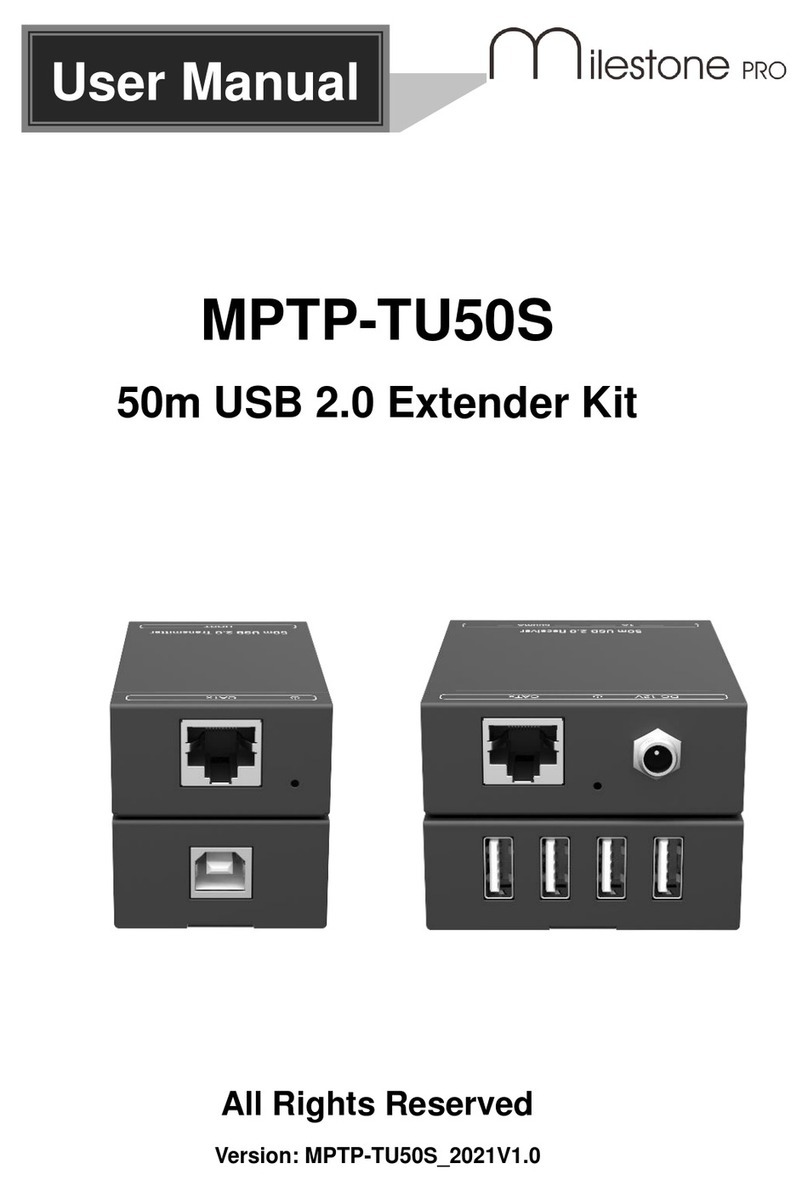
Milestone pro
Milestone pro MPTP-TU50S user manual

Enable-IT
Enable-IT 865X PRO quick start guide
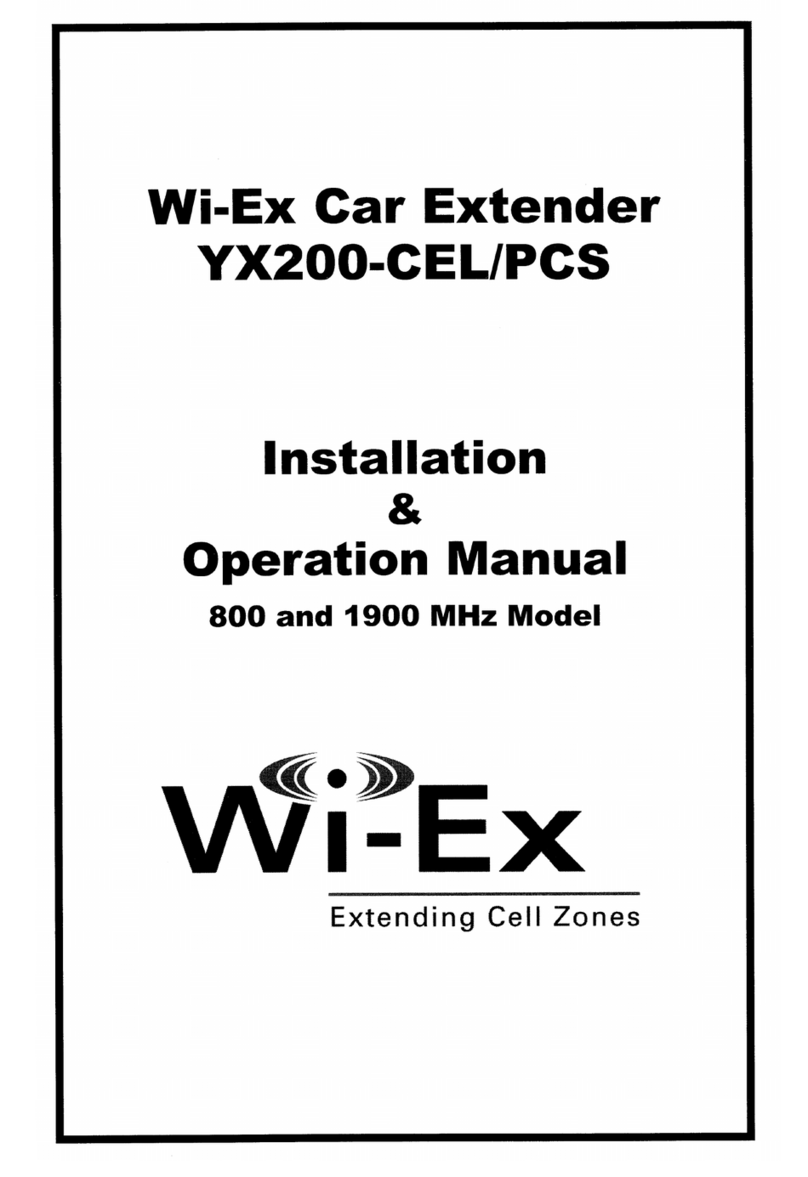
Wi-Ex
Wi-Ex YX-200CEL Installation & operation manual
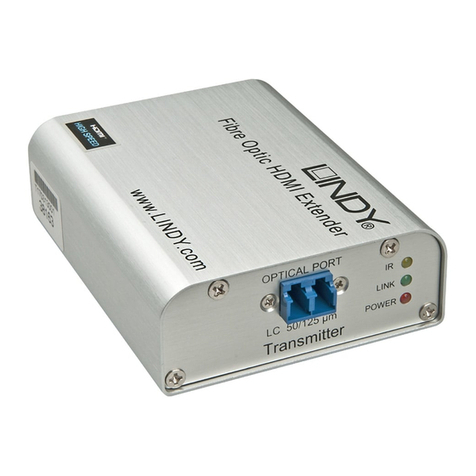
Lindy
Lindy 38163 user manual
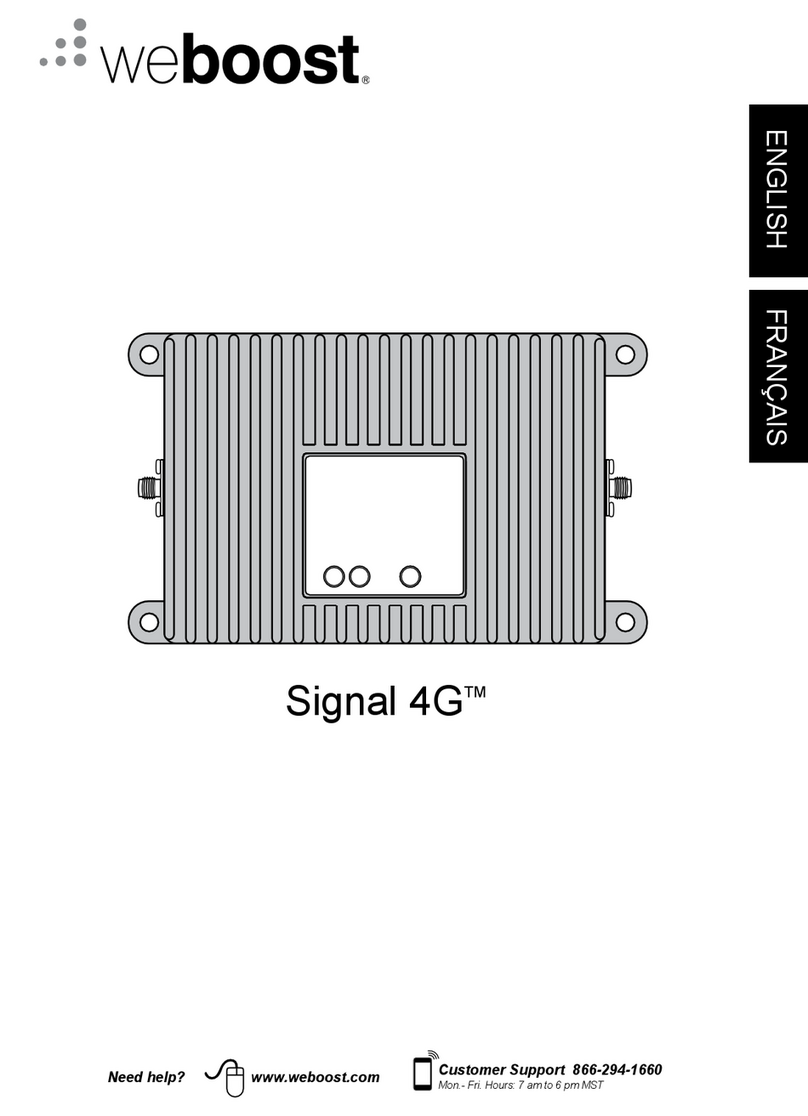
weBoost
weBoost Signal 4G SmarTech III installation instructions

Wilson Electronics
Wilson Electronics Weboost AM100-PRO installation guide

